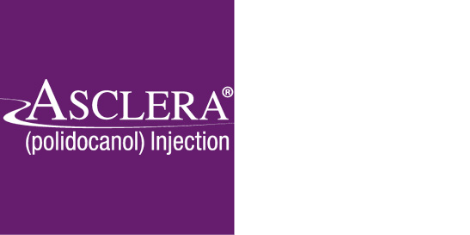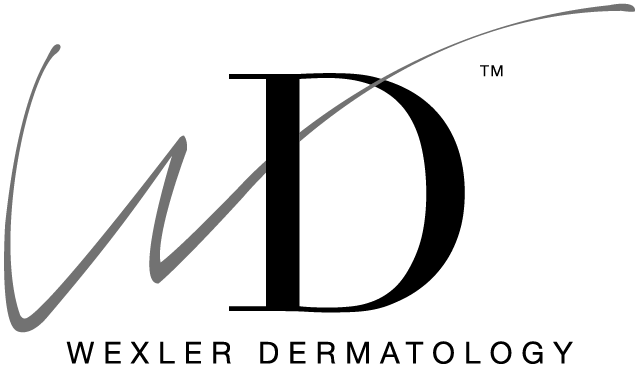Fillers
The Science
“Fillers” is a term we use for the different families of injectables approved for adding volume to the face. The filler is injected into areas where volume has been lost (such as the apples of the cheeks or the backs of the hands), or where more volume is desired (under the eyes, in the lips). “If you’ve lost volume, you want to give the volume back where you lost it,” Dr. Patricia Wexler explains. When applied by a skilled dermatologist, filler can restore or enhance natural beauty with the utmost subtlety.
In the early days of cosmetic dermatology, fillers would be comprised of fat or collagen. Today, there are three main families of fillers which are safer, last longer, and have more predictable results. The ones we use in our practice are:
Hyaluronic acid (HA) fillers
Juvéderm® products, Restylane® products, or Belotero Balance®
The most common type of filler used today, nonpermanent HA fillers are incredibly versatile. Depending on how the HA is engineered and processed, the end result is a gel that can be soft or firm, flexible or structural, and of shorter or longer duration in the skin. These characteristics are important depending on the area of use: eyes, lips, jawline, temples, or the lower third of the face. The concentrated and engineered particles, and the configuration of HA chains, create a product that can be firmer (great for deeper filling) or more elastic (a good choice for areas of strong movement). Your dermatologist may use a combination of different HA fillers, contingent on the anatomy of your face and the goals of your treatment.
Calcium hydroxylapatite (CaHA) fillers
Radiesse®
For deeper volume loss, such as in the backs of the hands, semipermanent CaHA fillers are an excellent choice. There is an immediate filling effect because of the gel itself. Over time, the gel promotes the growth of new collagen, continuing to improve the appearance of skin, with longer-lasting results than HA fillers.
Poly-L-lactic acid (PLLA) fillers
Sculptra® Aesthetic
For the longest lasting results, dermatologists turn to semipermanent PLLA fillers. Similarly to CaHA gels, PLLAs use the body’s natural healing powers to improve volume. Once injected, PLLAs help to stimulate collagen production, reinforcing the skin’s inner structure and adding a natural lift. For best results, multiple treatments are required. It may take several weeks for maximum results to become visible, but those results do last several years.
Our Approach
More than any other cosmetic dermatological skill, fillers require the hand of an artist to achieve the best results. Our skilled injectors know to never to use an injectable to fill a defect—we use it to treat the cause of the defect, resulting in a lifted and rejuvenated look.
When applied improperly, fillers can create a face that looks puffy or unnatural. “I always inject on the level of the bone, because all of the fat we like in a woman’s face is in the pockets, whereas most doctors are injecting in the dermis and giving patients round faces. I always ask to see my patient’s driver’s license, or wedding picture. I give them back the face they had. That’s what’s fun about what I do. It’s about the patient who looks in the mirror after and says, ‘That’s what I missed,’” recalls Dr. Patricia Wexler.
Rather than trying to turn back the clock with fillers alone, we consider the addition of injectables as one part of a three-dimensional approach to looking younger: “You can look natural with layering of fillers and combining that with other techniques, such as toxin and either radiofrequency or ultrasound…without having scalpel procedures.”
What to Expect
Length Of Procedure
The entire procedure, from assessment through injection, should last 45 minutes to an hour.
Results
All fillers should have some immediate result, which will improve over time.
The final results for HA fillers are achieved after about a week, and should last from 6 months to 18 months, depending on the product. The firmer the HA concentration, the longer it tends to last, so injections to the upper cheeks may often last longer than injections to the lips.
The best results for CaHA fillers are achieved after two weeks, and can last up to 18 months. PLLA fillers will require a few months of regular touch-ups, with final results lasting 2 years.
Downtime/Aftercare
Although we use topical anesthetics (and numbing agents are often part of the fillers’ formulation), you may expect some bruising, swelling, and tenderness after your injections.
If your doctor has given you a PLLA filler, you’ll be asked to perform some specific aftercare:
- For the first 5 days after treatment, you will be asked to massage the treated areas for 5 minutes
- You should avoid UV and sun exposure until swelling and redness disappear
- You will need to schedule a follow-up appointment with your doctor for a touch-up
Number of Treatments
Injectables like fillers and toxins are seen as nonpermanent maintenance treatments. We recommend patients return every 6 months to a year, depending on your doctor’s advice.
In the case of PLLA injections, your doctor will recommend a course of initial injections to receive maximum results. These should last over the first few months so the natural collagen benefits can be fully realized. Once the touch-ups are complete, the dermatologist will recommend you return for treatment in roughly 2 years.
Treated Conditions
- Creases
- Eye Rejuvenation
- Folds/Movement Lines
- Hand Rejuvenation
- Lip Rejuvenation
- Scars
- Volume Loss
- Wrinkles and Fine Lines
Read More About Fillers

Meet Our Experts




